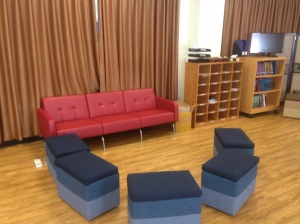The new buzz phrase in education is the classroom as the “third teacher.” In the digital, do it yourself age of the 21st century, classrooms can indeed do much of the teaching if they are set up correctly.
Through my exploration of classroom and school design last year, I came across several resources that helped guide us in envisioning the Futures Academy space. I have provided a brief summary of the findings below inclusive of workshops, books, Moocs and online learning forums.
1. Defining the need
Will your classroom promote and foster collaboration? Innovation? Encourage creativity?
Defining the need of the classroom will help guide teachers and students in the setup that promotes this kind of thinking. Edutopia advises a guided protocol called “word association” that directs participants to think of one word to associate with the prompt. This will help direct them into shared goals and get everyone thinking on the same page.
Another strategy to “define the need” is having a colleague observe where you and the class spend most of your time during the course of the day. By tracking movement through various colors, you can more easily see the space most important and conducive to the learning you conduct.
2. Remove unnecessary clutter
As teachers we oftentimes fill our rooms with posters, guidelines and rules to promote the delivery of our subject matter. While these can be helpful in guiding students in the initial stages, oftentimes they distract from learning that changes daily. By defining the most important space and removing unnecessary clutter, the class can focus on the type of items that actively promote learning.
3. Allow for flexibility
The cliche, “What we learn today will be outdated by tomorrow,” while most certainly overused, is very indicative of the kine of learning that takes place in a rapidly shifting 21st century. Our classrooms should allow for this kind of flexibility and adaptability in learning. Furniture should be on wheels, walls should be movable, resources all available online, and finally, forums that allow for input to be changed daily.
4. “Maker Space”
The maker’s movement is taking off in the most innovative schools across the world. Students are building robots, formula one cars and simple machines with the only parameters being they create something of use. This open criteria for innovation has allowed students to take part in the same innovation that companies are asking of their workers fresh out of college.
5. Integration around Projects
The “third” teacher should also allow for the integration of content. Schools previously taught science, math, humanities, and technology as stand alone courses; but in the age of readily available information and the empowered employee, is this the best way to prepare students for their future? Projects help for the natural integration of content, whether it be an architectural project combining sustainable design and mechanical engineering or a model united nations project combining geography, history, economy and civics.
I have included pictures below of the way in which we have designed the Futures Academy Classroom with brief descriptions of what kind of thinking they promote.
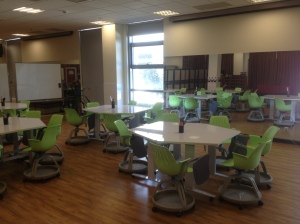
Tables groups of four to six students. Writable white board surfaces and flexible shapes. Trapezoids allow for easy re-shaping and designing of the space.
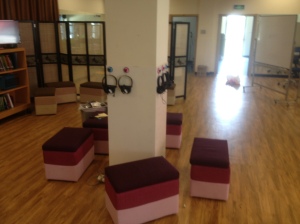
Brainstorm session around writable surface. Storage station for headphones to provide quiet environment or easy plug in.
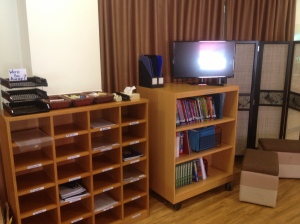
Organizational system for student work and the development of portfolios. TV for display of daily schedules and slideshow of student work/ photos of them in the workspace.
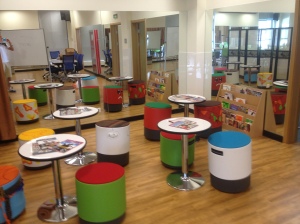
Small group reading/ brainstorm area with writable glass surfaces. Buoy chairs from Steelcase allow for comfort and different elevations.
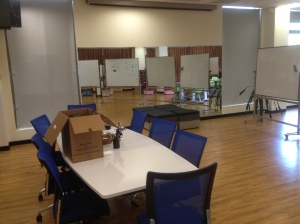
Meeting area for Skype conversations with experts. White boards to divide collaboration areas. Movable project screen for presentations.

Tinkering lab. Adjustable height table for various working positions. Arudinos, rasperry pi’s available for programming. White board in back of room for storyboard design. Cameras for film work. Will paint the back wall green for filming and sides with chalkboard paint to allow for collaboration on script ideas.
